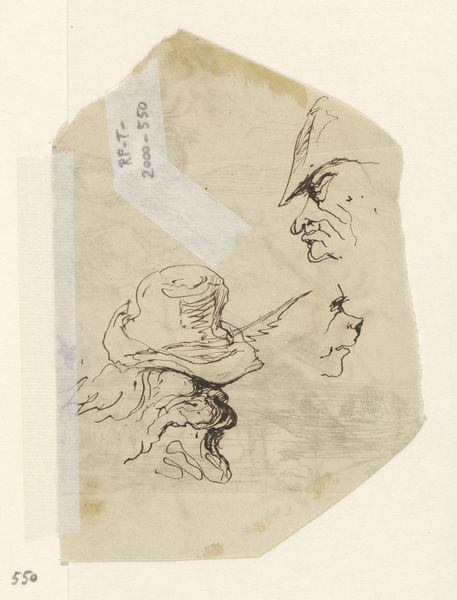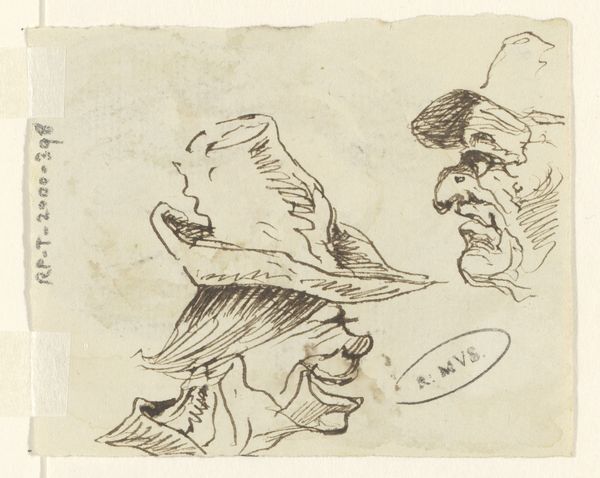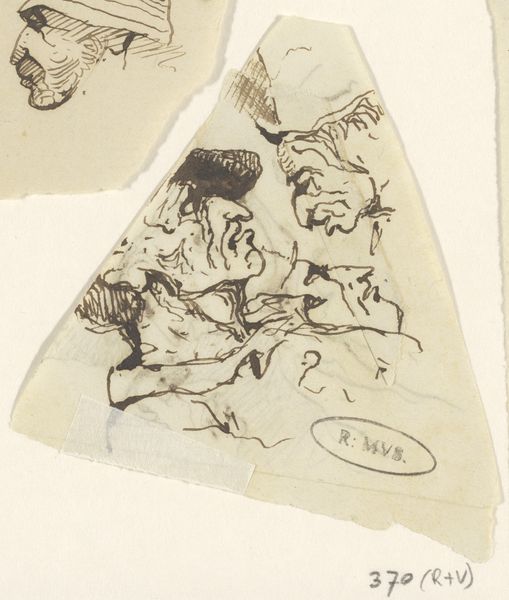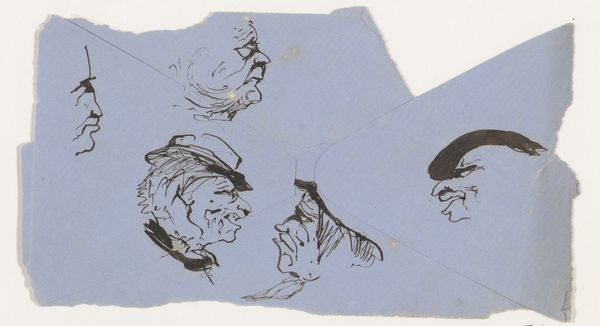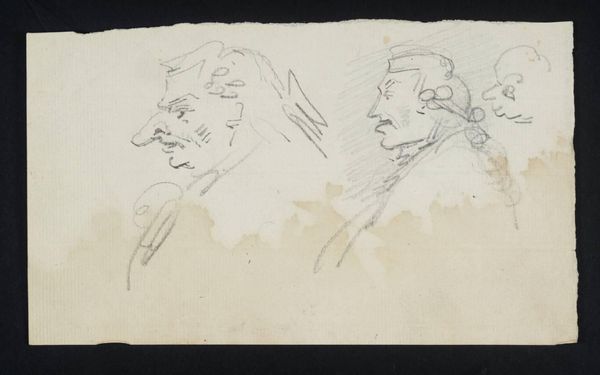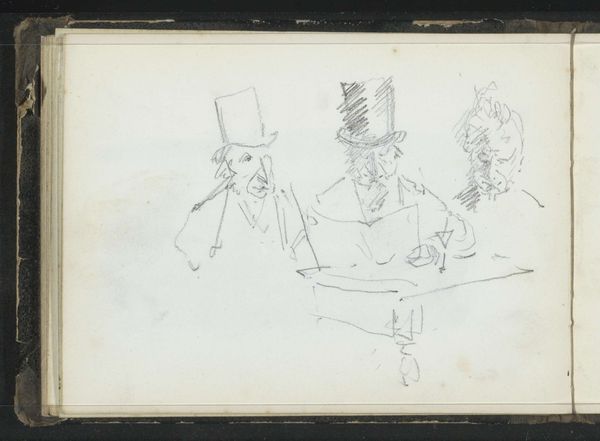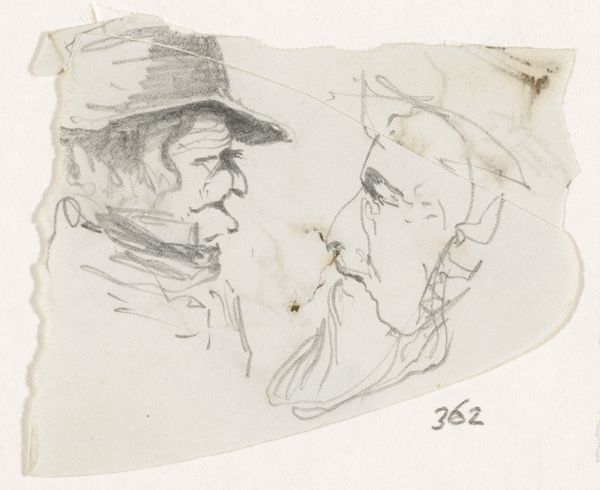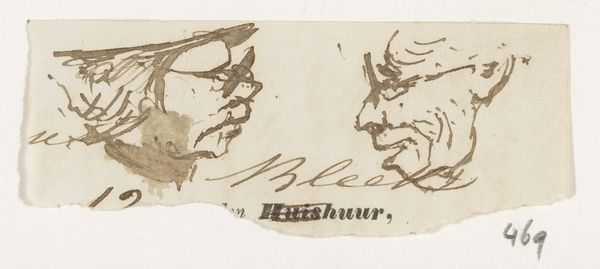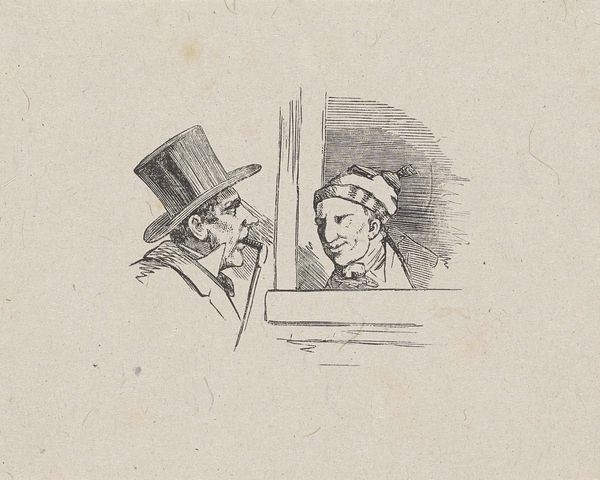
drawing, ink
#
portrait
#
drawing
#
caricature
#
pencil sketch
#
figuration
#
ink
#
pen-ink sketch
Dimensions: height 52 mm, width 148 mm
Copyright: Rijks Museum: Open Domain
Editor: Here we have “Drie Koppen,” or "Three Heads," a pen and ink drawing by Johannes Tavenraat, created sometime between 1840 and 1880. I'm struck by how rough and immediate these caricatures feel, like a glimpse into the artist's sketchbook. What stands out to you about this piece? Curator: Well, I immediately look to the materials and the process. It's not just a sketch, but an exploration of labor and production. Consider the readily available, inexpensive materials – pen and ink. What does it say that Tavenraat chose such a democratic medium for what appears to be, at least on the surface, high art, namely portraiture? Editor: That's an interesting point. I hadn’t considered the economic aspect of artmaking in this context. Does the choice of ink over, say, oil paints affect how we see the social commentary or even its potential audience? Curator: Absolutely. Think about who had access to and could afford these types of drawings versus grand oil paintings. These caricatures, reproduced and disseminated perhaps, would’ve had the potential to reach a wider audience, critiquing societal figures and norms of the time. Consider also that the perceived value of a drawing like this has been historically less than painting, thus the art object’s status affects its social standing. What do you think Tavenraat’s view on consumption might be based on his methods? Editor: It suggests maybe a rejection of luxury and embracing of simplicity. By creating art with easily accessible tools, he might be commenting on the value society places on material wealth versus artistic expression accessible to everyone. Curator: Precisely. And by turning these men into caricatures using ink, what is he also deconstructing or questioning? The social fabric, perhaps, since figuration often speaks to position in life. Editor: I’m seeing the drawing with fresh eyes now, focusing on the means by which Tavenraat’s artwork achieved more impact, by reaching broader audiences than perhaps oil painters were able to reach. Curator: Indeed, it highlights how art can be both a product of and a commentary on its social and material conditions.
Comments
No comments
Be the first to comment and join the conversation on the ultimate creative platform.
